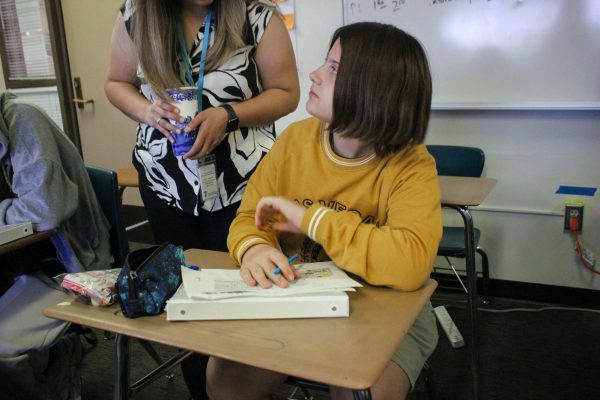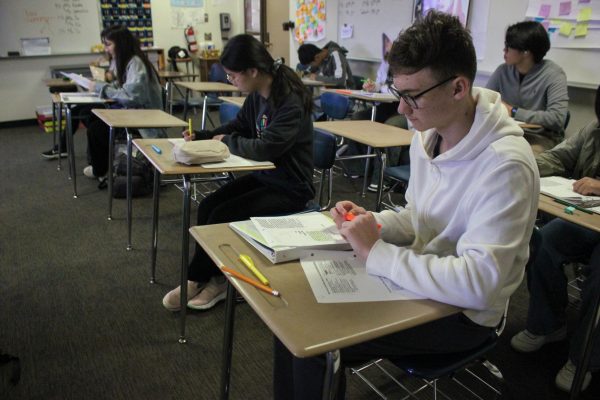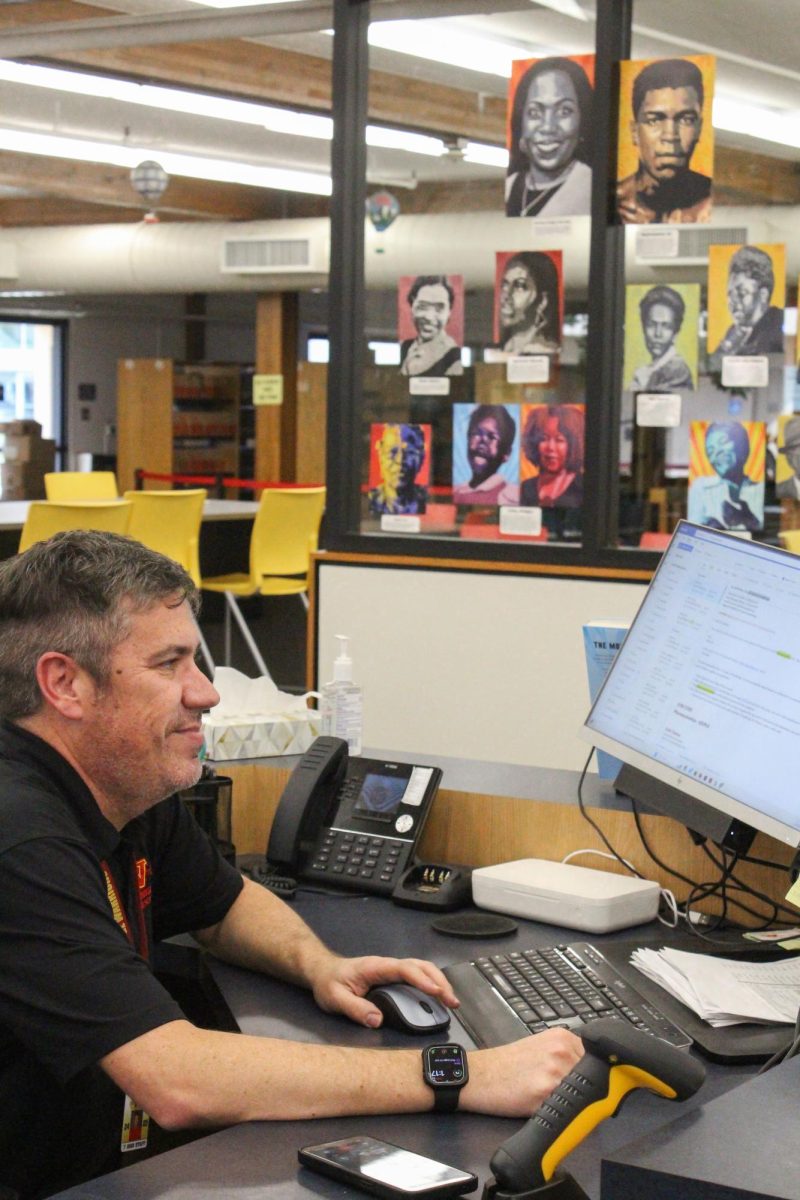Starting at a new school—whether due to a move across town or the leap from middle to high school—can be daunting. But for some students, the challenge is even greater. They are not only adjusting to a new campus, but also to an entirely different country, culture and language. Navigating an American learning environment while juggling social and academic expectations can make the transition even more overwhelming.
At Woodbridge High, English learners (ELs) receive specialized support through courses like Sheltered English I and designated English Language Development (ELD) instruction. The ELD pathway for English learners is structured similarly to how foreign language classes are designed for English speakers. ELD 1 is for very new speakers, ELD 2 expands on that foundation and ELD 3 further develops those skills to an intermediate level. There are ELD classes for the social science path and science path.
According to the National Center for Education Statistics, in 2021, the percentage of public school students in the U.S. who were English learners (ELs) was 10.6%, or 5.3 million students.
California has the second-highest percentage of EL students in the nation, with 18.9% of its public school students classified as ELs.
For many immigrant students, learning a new language, culture and community starts in these classes. Freshman Artemii Ratov moved from Ukraine three years ago.
He is currently in English teacher Heidi Bowman’s class Sheltered English I: a course that is designed to help acclimate students who are learning English as their second language into the language arts system.
“Sometimes [Bowman gives] me more time, sometimes she [gives] me…[a] translated version. She [gives] me pages of quotes so I can find it at home and translate it,” Ratov said.
Freshman Andreii Polovyi is also from Ukraine and has been in the U.S. for four years. Ever since moving here, he has noticed subtle differences between the U.S. and Ukraine.
“In Ukraine, we have more homework than in American school[s],” Polovyi said.

(Mahati Iyer)
Freshman Rui Shi came to the U.S. when she was in first grade. She remembers her teachers in China being more strict compared to her American teachers, who are more relaxed.
“In China, it’s more like you don’t really talk to your teacher, you just listen to whatever they say. And in America, you have conversations with them,” Shi said.
Ratov did learn some English in Ukraine. However, the English taught in Ukraine was the British dialect compared to the American dialect. For him, it was hard to catch onto his classmates’ speaking patterns.
“American students [talk] very fast and they don’t pronounce some letters in the words, so it was very difficult to understand,” Ratov said. Courses such as Sheltered English I and designated ELD instruction reflect Irvine Unified School District’s (IUSD) commitment to ensuring EL students have meaningful access to educational opportunities, as outlined in the district’s Administrative Regulation – 6174.

(Mahati Iyer)
However, access to education goes beyond just curriculum—it also requires a welcoming environment that students can easily approach for support in face of unfamiliarity.
For English and ELD 1 teacher Jessica Steenhard, fostering a welcoming environment is just as important as teaching the language. “On the first day of class together, I take my ELD 1 students on a tour of the campus so they can become familiar with Woodbridge [High]…During the first week, we label my classroom as a visual reminder of some key terms that the students will encounter throughout school. I also like to ask them about some of their favorite things and their families,” Steenhard said.
Being comfortable speaking in a foreign language can be challenging, especially for students new to English who live in a country where, according to the American Community Survey, 78% of its inhabitants speak it as a first language. To help lessen the intimidation of learning English, ELD teachers create an environment where mistakes are part of the learning process.
“Some of my students are very social and willing to take risks, not worried about being embarrassed. But, like me, many of my students are shy and don’t want to make mistakes…I personally try to be as silly and animated as possible in class to help my students realize that our classroom is a place where it is okay to make mistakes in speaking,” Steenhard said.

(Mahati Iyer)
With the help and support from his teachers and classmates, Polovyi has built confidence in his English skills. “Right now [speaking English is not] scary, but in middle school [it was] scary,” Polovyi said.
For students like Ratov and Polovyi, the journey of learning English and adjusting to American culture is more than just mastering a new language—it is about building connections and adapting to a new way of life.
Ratov lends advice to students who are now new to the U.S. and might relate to his situation.
“Don’t be shy to make friends with other students. If you have [an] accent, you should understand that everybody understands [that] English is not your first language and don’t be scared to ask for teachers for more time or for…[a] translation,” Ratov said.
For students new to the U.S., adjusting to American culture means navigating differences in classroom dynamics, social experiences and language—experiences that can be challenging, but also eye-opening, as they discover what makes American schooling unique compared to their home countries.







